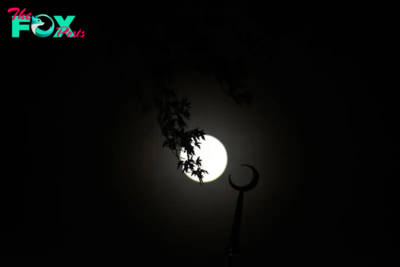Science
Humans have long been a 'geophysical force on a planetary scale,' says philosopher Timothy Morton. That's neither good nor bad.
Timothy Morton is an enigmatic character. An English professor at Rice University, but one that specializes in ecology and the way it interacts with cultural issues, and a leading member of the object-oriented philosophy movement. Their latest book "Hell: In Search of a Christian Ecology" explores how religion overlaps with Science in strange and surprising ways, while another recent project involved working with Andrew Melchior of U.K. trip-hop collective Massive Attack and MIT's Kiyoshi Masui to make music about fast radio bursts.
They are also known — by their own admission rather embarrassingly — as "the prophet of the Anthropocene." We spoke to them ahead of the HowTheLightGetsIn festival in London, which takes place this weekend (Sept. 21-22), about how they got this title, what the Anthropocene means, and why we need to stop trying to define when it started and accept that we've been in it for millennia.
Alexander McNamara: You've been described as the "prophet of the Anthropocene." Can you explain what the Anthropocene is and how you got the title?
Timothy Morton: It's the title of an article about me in the Guardian newspaper that showed up in 2017. This guy [Alex Blasdel] interviewed me and my colleagues and friends for about half a year and produced this huge think piece called "The Philosopher Prophet of the Anthropocene" and that's me.
At that point there weren't that many people in humanistic scholarship actually looking at this [the Anthropocene]. I had been going around the world talking about a concept I developed called Hyperobjects, which many people found very engaging as a way to think, talk, and also make art about global warming. It's a thing that's so big and so vast, it's hard to see it. You can visualize it, you can understand it, but you can't see "it." It's got this kind of sinister, multi-dimensional quality to it, and the Anthropocene is a similar thing.
It is a geological period — and I'm going to give the strict definition of the Anthropocene — there is a layer of human-made materials in the top layer of Earth's crust that goes back to roughly 10,000 B.C. And that's the Anthropocene that geologists are talking about. This layer is everywhere.
It's a hard concept for people to get their head around. It's a fiercely contested period right now because they [the Subcommission on Quaternary Stratigraphy (SQS), which approves new geological time periods] decided to nix the concept.
-

 Science1h ago
Science1h agoHow to See the ‘Beaver’ Supermoon—the last of 2024
-

 Science5d ago
Science5d agoInside Capitol Hill’s Latest UFO Hearings
-

 Science5d ago
Science5d agoYou Won’t Want to Miss the Leonid Meteor Shower. Here’s How and When You Can See It
-

 Science5d ago
Science5d agoHere’s What Trump’s Win Means for NASA
-

 Science1w ago
Science1w agoWhy Risky Wildfire Zones Have Been Increasing Around the World
-

 Science1w ago
Science1w agoIt’s Time to Redefine What a Megafire Is in the Climate Change Era
-

 Science1w ago
Science1w ago4 Astronauts Return to Earth After Being Delayed by Boeing’s Capsule Trouble and Hurricane Milton
-

 Science1w ago
Science1w agoThe Elegance and Awkwardness of NASA’s New Moon Suit, Designed by Axiom and Prada



























